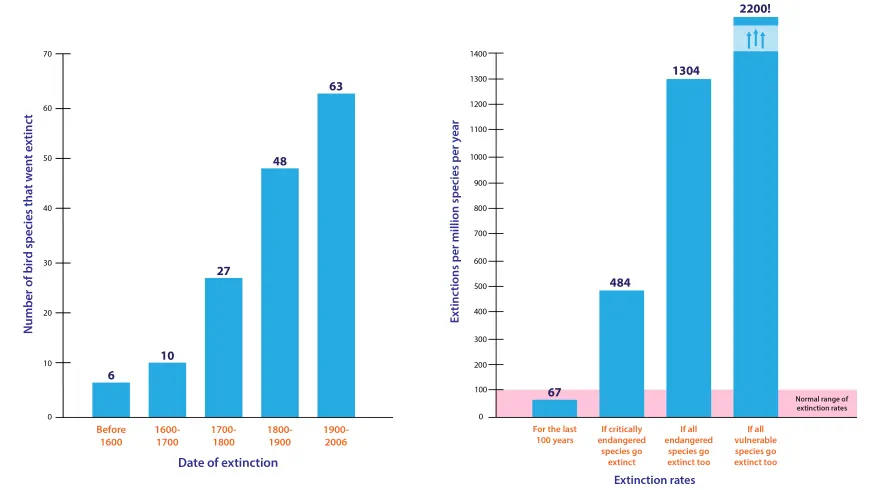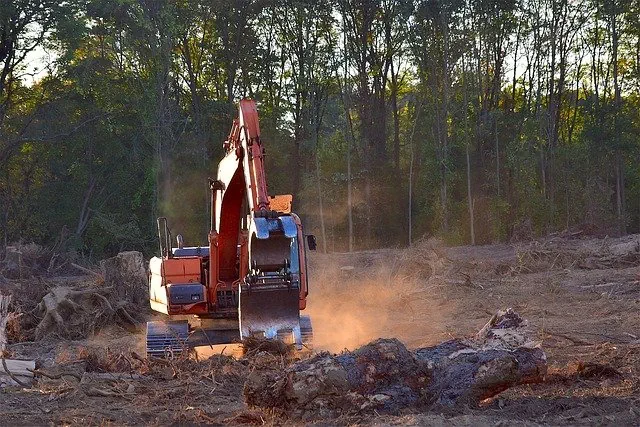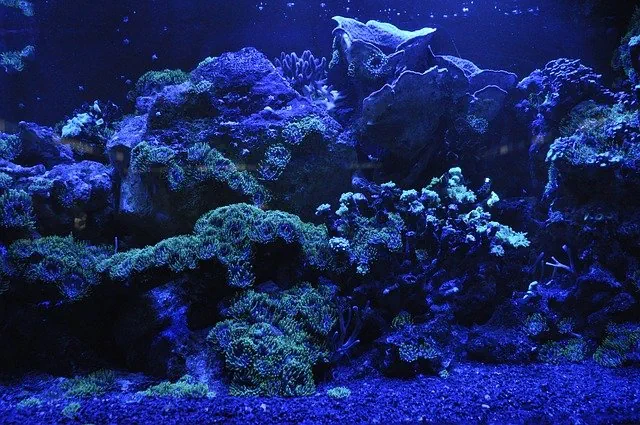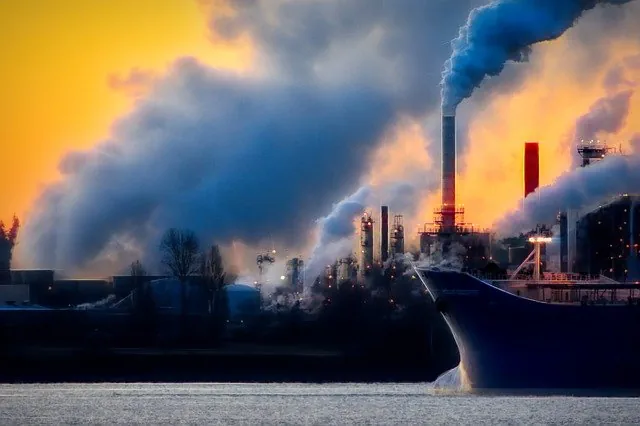
What is Causing the Sixth Mass Extinction?

Table of Contents
Fossil records show that over 99% of species that ever lived on the planet Earth have gone extinct. Five mass extinctions that major geologic and climatic events caused were responsible for this disastrous loss. Unfortunately, scientific evidence indicates that the sixth mass action is currently taking place. So what is causing the sixth mass extinction? Read on for what is causing this dreaded problem and expert tips on minimizing the dangers associated with it.
What is the Cause of the 6th Mass Extinction?
In the last few billion years, massive volcanic eruptions, collisions with asteroids, depletion of Ocean Oxygen, and other geological and climatic events were the causes of mass extinctions. Currently, these factors still threaten the existence of life on Earth. However, the most serious concern in the 21st century is human activities.
Human actions have proven to expose the Earth to greater danger than ever imagined. Remember that the present global extinction rate is approximately 100-to-1,000 times more than it would have been without the negative involvement of humans.
Before human influence became an environmental issue, the typical extinction rate was approximately one per 10 million every year. This figure shows that the extinction rates during the human era are much higher than ever thought. In the next 100-or-so years, we could lose more than half of the remaining species. This realization reinforces the urgency to conserve whatever we’ve not destroyed.
Please note that various studies provide different approximations. However, all of them reinforce earlier findings that suggest that the rate of extinction is much higher today than ever imagined. The graph below illustrates this.

Graph on the left shows how human activities have increased the rate of bird extinction. Graph on the right shows that we’ll official cause mass extinction if the extinction rate remains constant or increases
Now let’s dive into specific activities that cause the Sixth Mass Extinction below.
Agriculture
The high human population growth is driving the demand for plenty of food. Due to the lack of sufficient farming land, most farmers in some parts of the world are forced to clear forests. The UN Food and Agriculture Organization provides that over 40% of the Earth’s surface currently supports agriculture. The result has been devastating since forests formerly covered a significant fraction of these lands.
Here’s how agriculture is causing the sixth mass extinction:
Habitat destruction: Animals that call forest home serve when humans destroy their habitats. The clearing of forests also threatens the existence of other species that depend on these animals for survival.

Deforestation machine at work. Pixabay
Global warming: Humans are responsible for the over three billion tons of carbon dioxide released into the Earth’s atmosphere every year. Deforestation is to blame for this increased level of pollution. Remember, the Earth’s carbon sinks can no longer absorb excess carbon dioxide, leading to an increase in the temperature of the globe beyond acceptable levels.
Aquatic resource degradation: Farmers are under pressure to maximize their returns. So, they inject lots of phosphorus and nitrogen nutrients into their farms. In the end, these chemicals pollute water systems, destroy ecosystems, and expand the aquatic dead zones.
Aquatic resource degradation: Farmers are under pressure to maximize their returns. So, they inject lots of phosphorus and nitrogen nutrients into their farms. In the end, these chemicals pollute water systems, destroy ecosystems, and expand the aquatic dead zones.
Excessive Use of Plastics
Many people pack their household goods and foods in plastic containers. They also use plastic-carrying bags. Approximately 70% of all household trash and waste that end up in landfills are plastics. Since plastics are non-degradable, they can’t decompose with ease even after hundreds of years.
About 51 trillion micro-plastic particles are currently in the oceans. The chemicals that plastics contain get released into the waters and interfere with the animal’s endocrine systems. They can then cause rapid cell division and result in incurable cancers in both animals and human beings.
Moreover, animals that mistake plastics for food and ingest them die in large numbers every day. In 2017, a huge whale that consumed nine pounds of plastics was found dead on Scotland’s coast. It was established that these items had blocked the animal’s digestive tract.
That’s just one example. According to UNESCO’s facts and figures on marine pollution, more than one million marine animals die every year due to plastics in the ocean. The affected animals include fish, turtles, birds, and mammals.
Emission of Greenhouse Gases
Since the industrial era, humans have been releasing unprecedented amounts of methane, hydrofluorocarbons, and carbon dioxide into the atmosphere. The current over-dependence on carbon-rich fossil fuels such as coal and gas oil is one of the leading underlying causes.
Between 1970 and 2013, the combustion of these fuels led to the release of roughly 400 billion tons of CO2 into the atmosphere. The levels of greenhouse gases are surprisingly higher today than ever due to the increasing human pollution and the lack of adequate effort to reverse this deadly trend.
The increase in greenhouse gases is the reason behind the increased concern about the sea-level rise and extreme weather events like droughts, flooding, heatwaves, and tsunami. These weather events and sea-level rise adversely impact food chains and biodiversity. Species that can’t withstand the changes are endangered.
Destruction of the Coral Reefs
Coral reefs are home to diverse ecosystems. They help secure the shore from tropical-weather-induced erosion. These plants also produce lots of nitrogen and other nutrients that marine life relies on for survival. Unfortunately, according to the World Wide Fund for Nature, 25% of coral reefs have been destroyed beyond repair. Moreover, two-thirds are facing the risk of extinction. One-fourth of these species might go extinct by 2050.
Human activities are the primary cause of this destruction. Remember, over 500 million people worldwide depend on coral reefs. If the trend is not reversed in time, all the coral reefs will be degraded and destroyed within the next few years. After that, the shores and marine life will be exposed to various threats, leading to the extinction of several primary life forms.

Growing coral reefs. Pixabay
Production of Black Carbon
Human beings have been generating black carbon for centuries, but the current trend has exposed the Earth to untold environmental risks. For example, more people than ever are emitting smoke into the atmosphere. This has led to a sharp increase in black carbon. You can see that many people are guilty of this evil. Whenever a person cooks with solid animal fuels, burns firewood, trees, or anything, or drives a car, the amount of these particles in the atmosphere increases and compounds the global warming effect.
Invasive Species
When people transport species intentionally or accidentally from one geographical location to another, they can harm the new ecosystem. For example, the animals can outcompete native species and lead to extinction or decline in the population of the local species. As you can see, the ecosystem disturbance can hurt the Earth and lead to official mass extinction in the long run.
To see how invasive species can impact the Earth, let’s consider what happened after the zebra mussel, a native of lakes in Russia, was accidentally brought into the US. The commercial ship’s ballast water drove these animals into the US in the 1980s. Since then, they have been spreading. The zebras have been sighted in various lakes in Massachusetts and covered the undersides of various marine structures, including boats and docks. They even threaten to block hydroelectric pipelines.
The United States has spent trillions to prevent this issue from escalating and adversely affecting the environment. For example, as per information from the University of California, the US spends over USD 500 million per year at water-consuming facilities, including power plants, to prevent their negative impact.
Another perfect example is the brown tree snake transported from their native Australia on planes and snakes to various Pacific Islands, including Guam. Since these snakes lacked local island predators, they multiplied quickly and caused the extinction of many mammals and birds they preyed upon in this new ecosystem. As such, the initial decision of humans to “hitch-hike” the brown tree snake has led to the onset of the sixth mass extinction on the Pacific Islands.
Now you can see what is causing the sixth mass extinction. What about its consequences? Let’s take a brief look at these consequences before we end.
What are the Consequences of the Sixth Mass Extinction?
As we’ve seen, human activities can drop the number of various species to a significantly low level.
Whenever this happens, you can expect the following:
- Species’ contribution to the ecosystem functions become insignificant
- Genetic variability and resilience reduced
- Contribution to human welfare may be lost
What to Do About the Sixth Mass Extinction?
We have discussed what is causing the sixth mass extinction and why its consequences threaten human existence. Now, what should we do about the sixth extinction? Each of the current species is outstandingly important. So, we should classify all of them with less than 5,000 individuals as critically endangered. This way, we’ll be able to enact the right policies to take care of them.

Smoke causing global warming. Pixabay
Moreover, since the window to save species is almost closed, we should implement a comprehensive global agreement requiring all nations to address the extinction crisis decisively. In particular, the agreement should focus on tackling issues on the legality of the wildlife trade.
Lastly, to save what we can within the shortest time possible, every person should endeavor to do everything within their effort to prevent extinction.
Now that you know what’s causing the sixth mass extinction and what’s at stake, it could be best if you play your role in saving the remaining species.